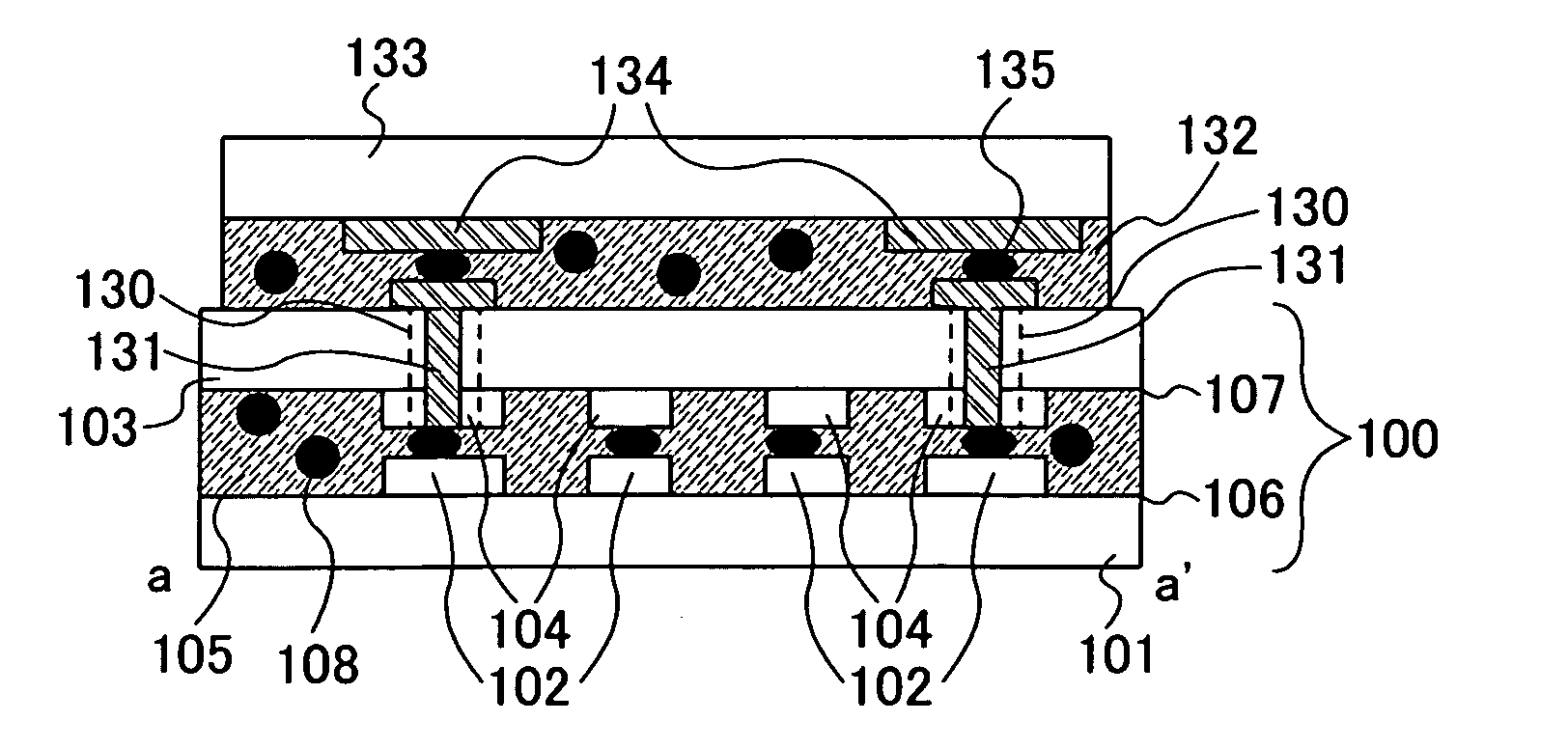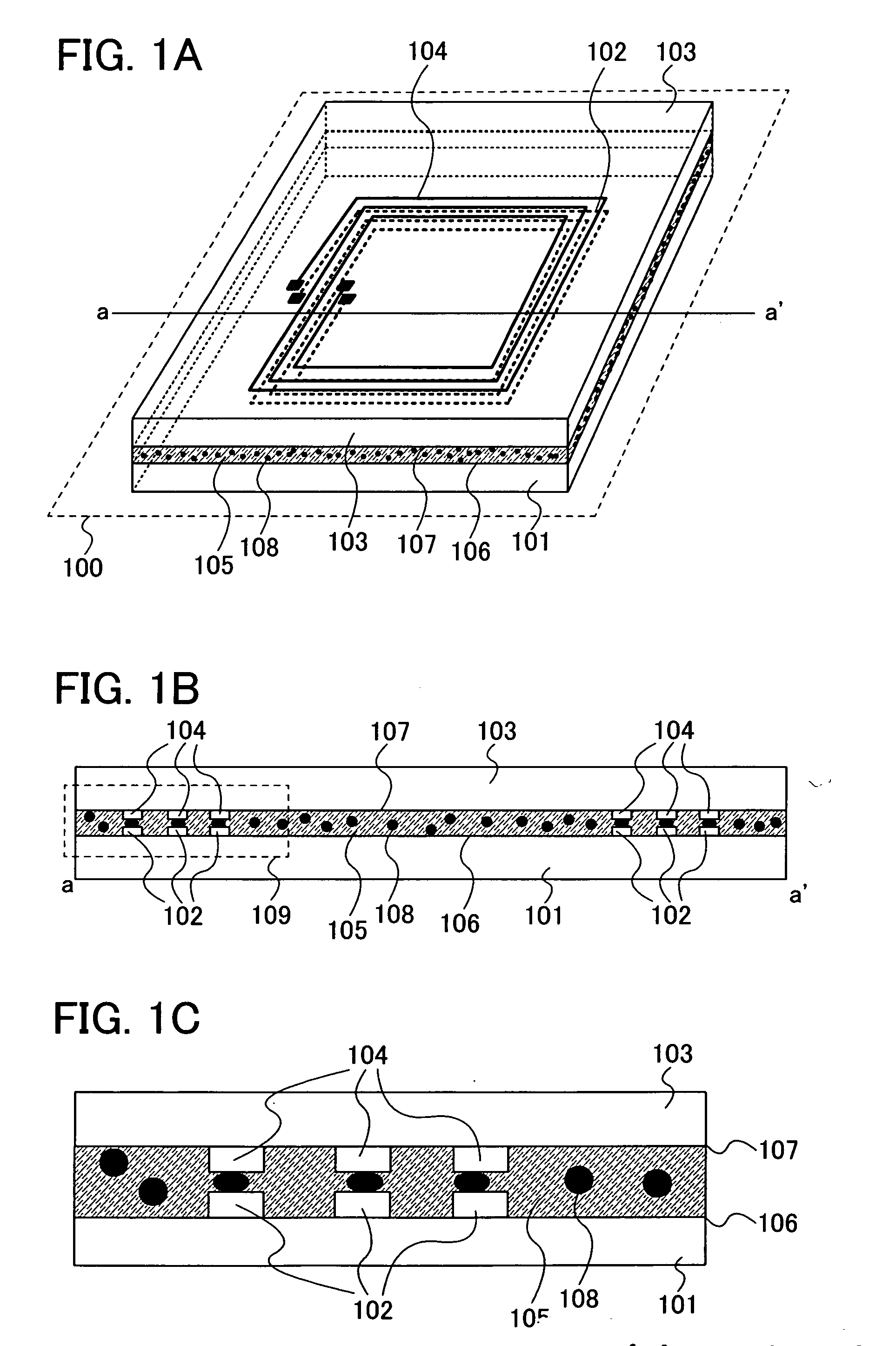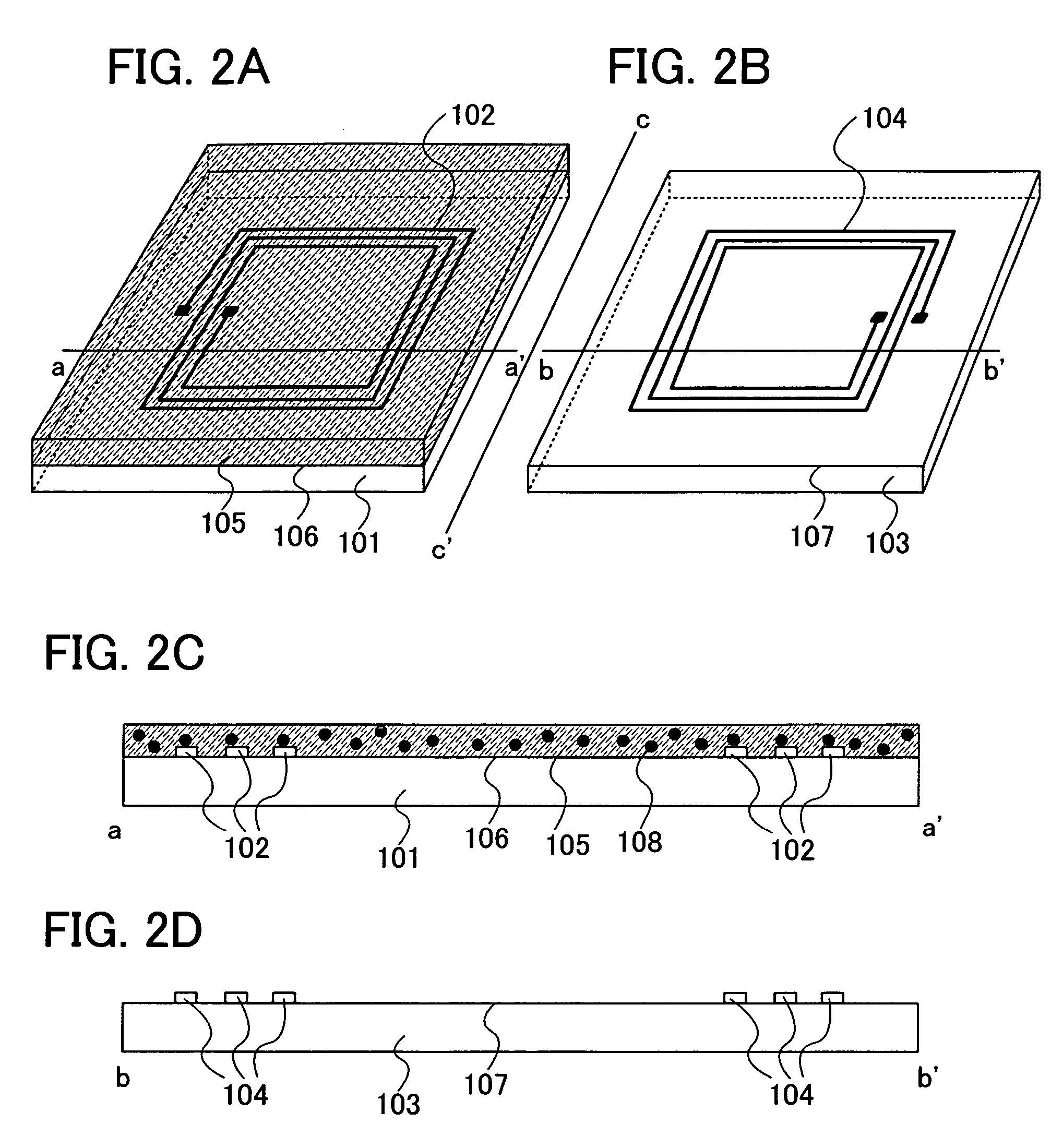Antenna and manufacturing method thereof, semiconductor device including antenna and manufacturing method thereof, and radio communication system
a manufacturing method and antenna technology, applied in the direction of resonant antennas, radiating elements, instruments, etc., can solve the problems of reducing resistance, difficult to increase the thickness of the antenna formed by screen printing, and difficult to improve the yield, so as to reduce the probability of the antenna being completely disconnected, increase the film thickness, and reduce the resistance materially
- Summary
- Abstract
- Description
- Claims
- Application Information
AI Technical Summary
Benefits of technology
Problems solved by technology
Method used
Image
Examples
embodiment mode 1
[0043] A structure of an antenna of the invention is described. FIGS. 1A to 1C each show a structure of the antenna. FIG. 1A shows a perspective view of an antenna. FIG. 1B shows a cross-sectional view taken along line A-A′ in FIG. 1A. FIG 1C shows an enlarged view of a region 109 in FIG. 1B. Note that common portions are denoted by the same reference numerals in FIGS. 1A to 1C. An antenna 100 includes a first substrate 101, a first pattern 102, a second substrate 103, a second pattern 104, and an anisotropic conductive material 105. The first substrate 101 has a first insulating surface 106. The first pattern 101 is formed of a conductive material, over the first insulating surface 106. The second substrate 103 is provided so as to face the surface of the first substrate 101, over which the first pattern 102 is formed, and has a second insulating surface 107. The second pattern 104 is formed of a conductive material, over the second insulating surface 107. The anisotropic conductiv...
embodiment mode 2
[0055] Description is made of a manufacturing method of an antenna of the invention with reference to FIGS. 2A to 2C. Note that common portions to those in FIGS. 1A to 1C are denoted by the same reference numerals, and description thereof is omitted.
[0056] As shown in FIG. 2A, the first pattern 102 is formed of a conductive material, over the first insulating surface 106 of the first substrate 101. The first pattern 102 can be formed by a droplet discharging method or a printing method. Note that a conductive film may be etched using photolithography or the like to form the first pattern 102. Subsequently, the anisotropic conductive material 105 is formed so as to cover all over the first pattern 102. In FIG. 2A, the conductive particles 108 in the anisotropic conductive material 105 are not shown. FIG. 2A shows an example where the anisotropic conductive material 105 is formed so as to cover all over the first insulating surface 106. Note that FIG. 2C shows a cross-sectional view ...
embodiment mode 3
[0065] Description is made of a structure of a semiconductor device of the invention with reference to FIGS. 3A to 3C. Note that common portions to those in FIGS. 1A to 2D are denoted by the same reference numerals, and description thereof is omitted.
[0066]FIG. 3A shows a perspective view of a semiconductor device. FIG. 3B and 3C each show a cross-sectional view taken along line A-A′ in FIG. 3A. Note that common portions to those in FIGS. 1A to 1C are denoted by the same reference numerals. A semiconductor device 300 includes the antenna 100 and a semiconductor integrated circuit 133 electrically connected to the antenna 100. The semiconductor device 300 transmits / receives a radio signal by the antenna 100, and inputs / outputs data.
[0067] As shown in FIG. 3B, a pair of contact holes 130 penetrating through the second substrate 103 to reach the second pattern 104 are provided. In a structure in FIG. 3B, the contact holes 130 do not penetrate through the second pattern 104. An electr...
PUM
 Login to View More
Login to View More Abstract
Description
Claims
Application Information
 Login to View More
Login to View More - R&D
- Intellectual Property
- Life Sciences
- Materials
- Tech Scout
- Unparalleled Data Quality
- Higher Quality Content
- 60% Fewer Hallucinations
Browse by: Latest US Patents, China's latest patents, Technical Efficacy Thesaurus, Application Domain, Technology Topic, Popular Technical Reports.
© 2025 PatSnap. All rights reserved.Legal|Privacy policy|Modern Slavery Act Transparency Statement|Sitemap|About US| Contact US: help@patsnap.com



